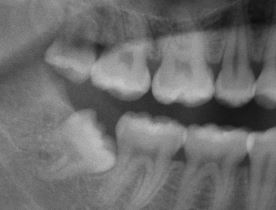What’s the Deal with Wisdom Teeth?

So we’ve all heard of wisdom teeth, and have friends and family members who have had them removed in the past. It seems that the two most common ‘rights of passage’ that teenagers go through dentally are having braces and having their wisdom teeth removed. But what really are wisdom teeth, and why should they be removed? Our dental care at Yonge and Lawrence dentist explains! Let’s discuss!
What are wisdom teeth? Wisdom teeth are the third set of molars located at the very back of the upper and lower jaws, which typically start to come into the mouth during the late teenage years. Most people have four wisdom teeth, but it is possible to have fewer or even none! Anthropologically, scientists have postulated that humans have wisdom teeth due to our evolutionary past. During our ‘caveman’ days’, our jaw bone structures were larger and denser. As a result, more teeth were able to erupt in the mouth as was needed for the raw meat that was eaten. However, as we evolved, our jaws became smaller which prevented the normal eruption of these wisdom teeth coming in straight into the mouth.
Why wisdom teeth may become a problem. Wisdom teeth become a problem when there isn’t adequate space for them to grow in straight. When erupting angulated (also known as being “impacted”), wisdom teeth can be painful and cause problems with chewing, swollen gums, infection, and damage to neighboring teeth. A prominent paper written by the American Association of Maxillofacial Surgeons concluded that wisdom teeth increase the bacterial flora in the mouth, can cause painful inflammation of the surrounding gum tissue (a condition known as pericoronitis), and may play a role in dental crowding of teeth (especially after braces are removed).
When should wisdom teeth be removed? Typically, wisdom teeth should be removed between 16-20 years old. Since the structure of the tooth roots and jaw bones are in their ideal conditions during this time, extraction during this ideal time frame allows for easier removal and quicker recovery.
Signs that your wisdom teeth may need to be removed. Pain or tenderness may occur in the back of the mouth (either top or bottom), and may even radiate closer to the ears, if severe enough. When you look in the mirror, the gums behind your back teeth may look red and swollen, possibly being a sign of pericoronitis (inflammation of the gums due to wisdom teeth eruption). Opening/closing your mouth may also be more tender. If any of these symptoms occur and you have not had your wisdom teeth removed, you should consult a dentist immediately.
What are your options? Besides the local anesthesia, wisdom teeth can be removed under sedation so the patient is much more comfortable during the procedure. Pain medication is typically only needed for the first day or two, and despite some mild initial swelling, most patients are back to normal in a few days.